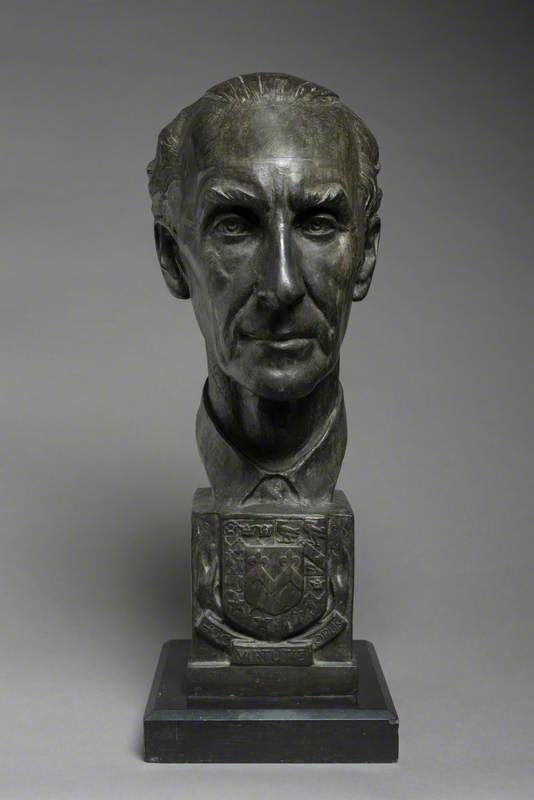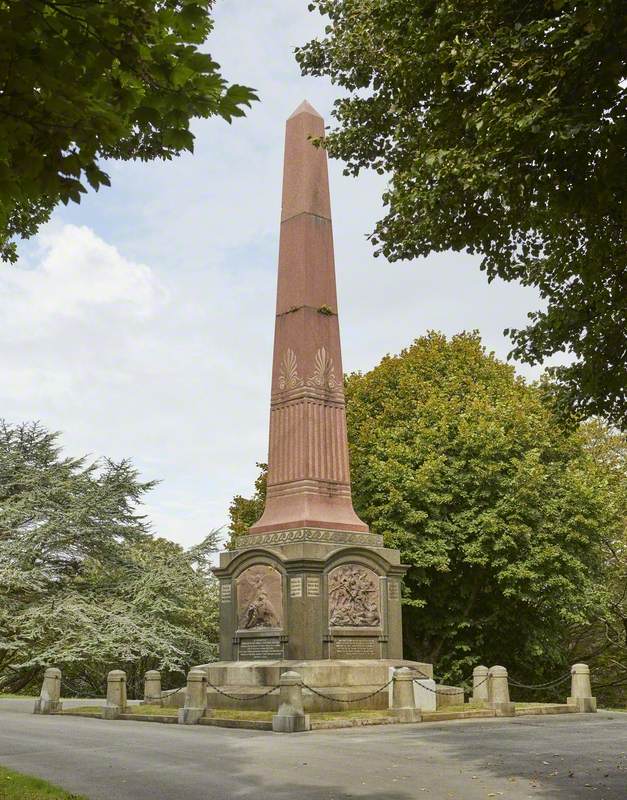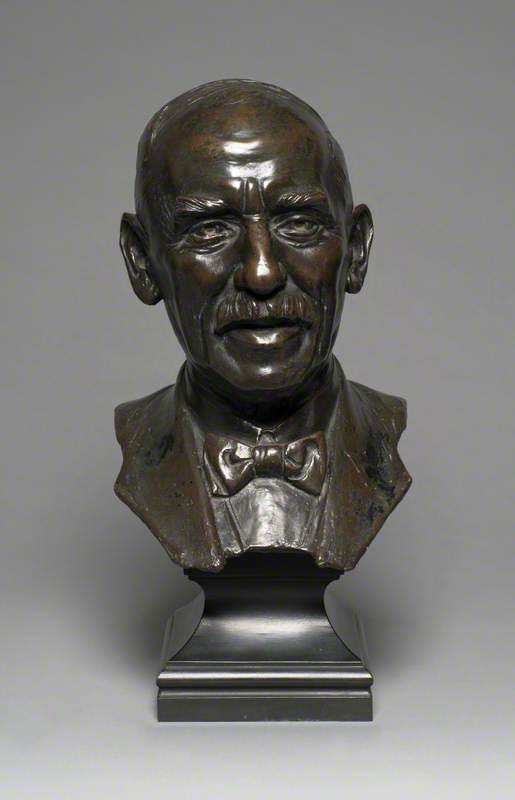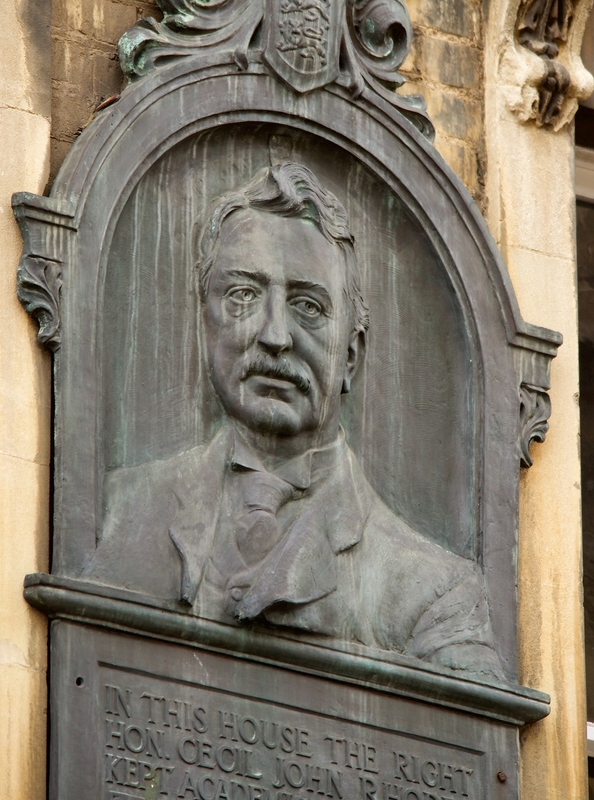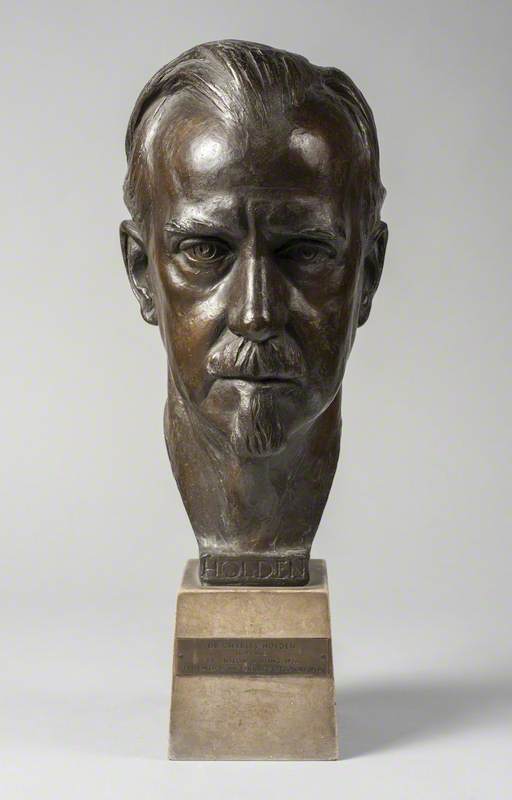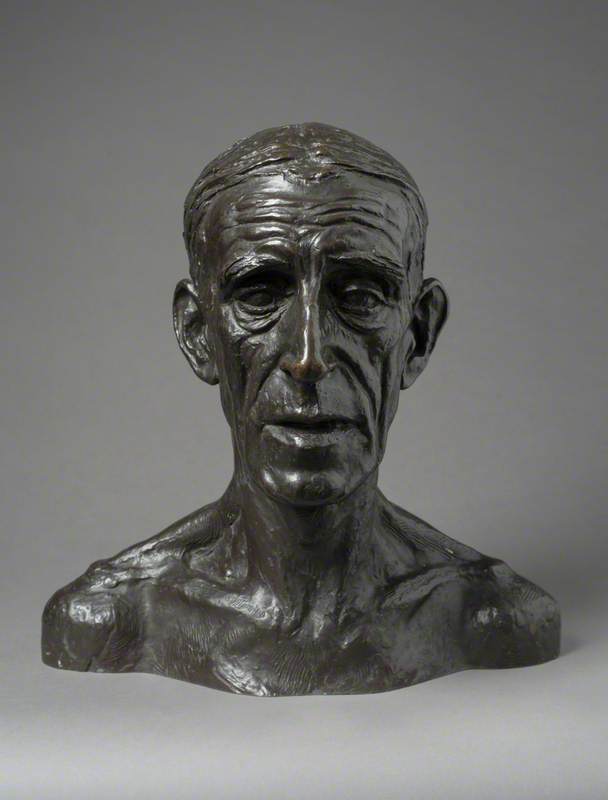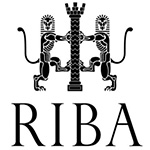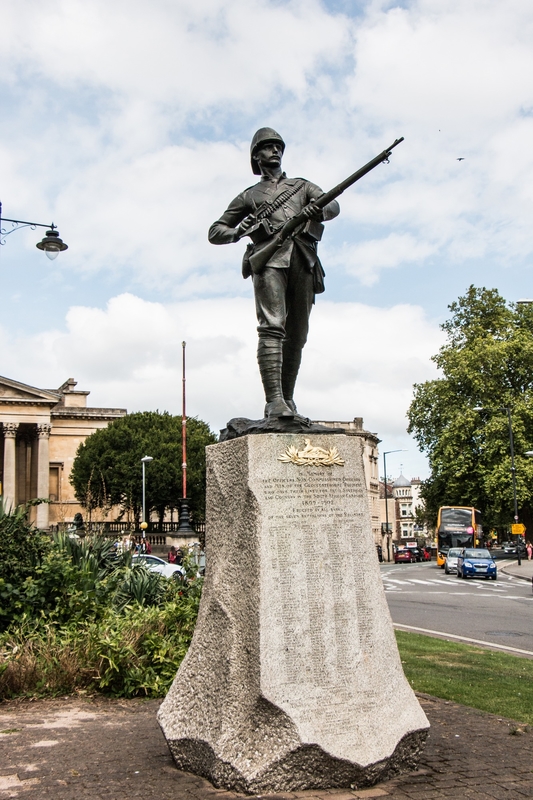
Gloucestershire Regimental Memorial 1904–1905
Onslow Whiting (1872–1937)
Onslow Ernest Whiting was born in Shoreditch, London, England on 4 June 1872 and studied at the Slade School of Fine Art, University College, London; and at Central School of Arts and Crafts in London. He subsequently worked as a sculptor, silversmith and jewellery designer. Whiting exhibited on several occasions at the Royal Academy in London between 1895 and 1933. He also exhibited at Manchester Academy of Fine Arts; Leeds City Art Gallery; and the Walker Art Gallery in Liverpool. He participated in the exhibitions of the Arts & Crafts Exhibition Society in London in 1895, 1899, 1903, 1906, and 1910. He was elected a member of the Royal Society of British Sculptors (RBS) in 1920; an Associate of the Royal Society of British Sculptors (ARBS) in 1923; and a member of the Art Workers Guild in 1924.
Notable commissions by Whiting included the Boer War Memorial at Plymouth Hoe in Plymouth, Devon, in collaboration with Fred W Marks and Emil Fuchs (1903); a Boer War Memorial to the Gloucestershire Regiment in Bristol (1904); a memorial bronze plaque to Cecil Rhodes in Oxford (1906); and a World War One memorial in Letchwoirth, Hertfordshire (1921). Onslow also produced several portrait busts including of the architects Charles Holden and Cecil Hignett; the politician Victor Bulwer-Lytton, 2nd Earl of Lytton; and the bookbinder Douglas Cockerell.
From 1901 until 1927, Whiting taught silversmithing and modelling at Central School of Arts & Crafts, London.
Whiting visited Tangiers in 1928-29 and in January 1937 he travelled to South America. He died a few months after his return.
He lived in London until 1905 when he settled in Norton, Letchworth Hertfordshire in a house built for him by the architect Albert Randall Wells (1877-1942). In the last decade of his life, Whiting lived in Cornwall. He died at St Catherine's Nursing Home in Letchworth on 4 August 1937.
Text source: Arts + Architecture Profiles from Art History Research net (AHRnet) https://www.arthistoryresearch.net/
